By: admin | October - 5 - 2010
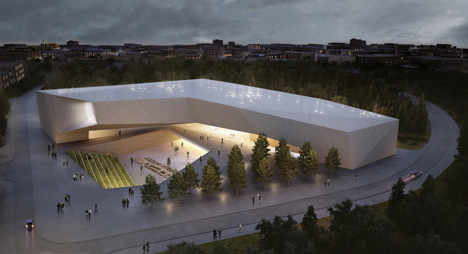
Chyutin Architects won the international competition to design the new Museum of Tolerance in Jerusalem.
Architect’s vision:
The Museum of Tolerance is located at the heart of modern Jerusalem, in its rejuvenated city center, on the borderline between the spacious Independence Park, and the urban built environment. The location is a meeting site of three main streets which differ in character and function. Hillel street: a bustling commercial zone; Moshe Ben Israel street: a road crossing the park; and Moshe Salomon street- Nachalat Shiva’s pedestrian mall, a tourist hub, full of restaurants and shops.
The buildings surrounding the museum site have diverse architectural characteristics, representing the history of Jerusalem architecture from the 19th century up today. We wanted the MOTJ building to be integrated into the landscape without overshadowing the preexisting urban setting on the one hand, while asserting its own unique character on the other, an iconic structure that reflects transparency and openness and generates visual interest at close and distant views. The MOTJ is to act as a bridge between the different architectural styles present in its location on one hand, while stylistically using contemporary architectural language and exploring advanced technology and materiality. We wanted the MOTJ building to stand in the warm embrace of the urban fabric and the park around it, shinning as a jewel set to the skyline of Jerusalem.
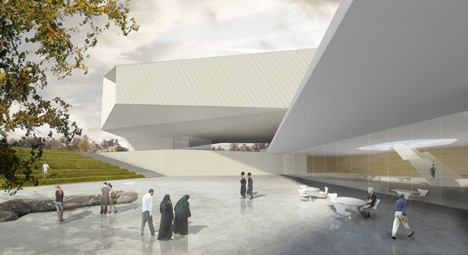
The MOTJ building is planed to host a variety of different activities: exhibition spaces, an education center, a theater, a multipurpose hall, offices, a restaurant, a gift shop, etc. The activities are diverse in the types of visitor communities they serve, in their operating hours, in their environmental requirements and in their interaction with the urban context. The developed building concept answers the requirements of each specific activity, encouraging undisturbed access for the various communities to their appropriate destinations.
We designed an elongated structure which traces the southern and eastern borderline of the site. The structure orchestrates the three surrounding streets, into a coherent urban space-a new public square for the rejuvenated city center of Jerusalem. The design of the public square incorporates several different elements: a sunken archeological garden, enclosing the remains of the roman aqueduct discovered at the site’s center, a terraced amphitheater, a grove and various public paved areas, for the various activities of visitors.
The building is divided into two horizontal wings: a three floors floating upper wing which hosts the theater and social meeting spaces, and a two floors lower sunken wing which hosts the children and the adult museums exhibition spaces- the so-called “dark box.”. The entrance floor is located at the level of the public square hosts a restaurant and gift shop The entrance floor is leading up to the floating wing or down to the sunken one. A four-leveled lobby connects the floating wing and the sunken one. Part of the floating wing is suspended over ground level, creating a gap, a doorway, from the built city to the park. Pedestrians who are relaxing in the public square or walking towards the park may be enticed to enter the MOTJ building and experience it.
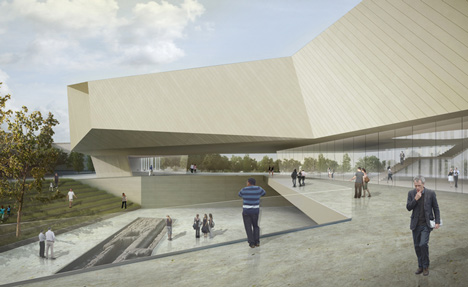
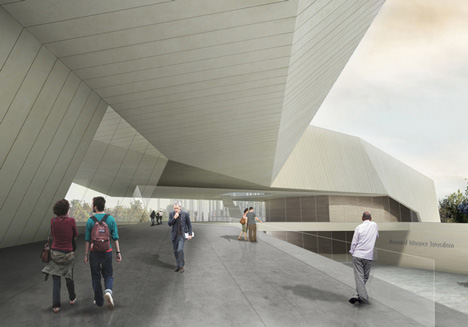
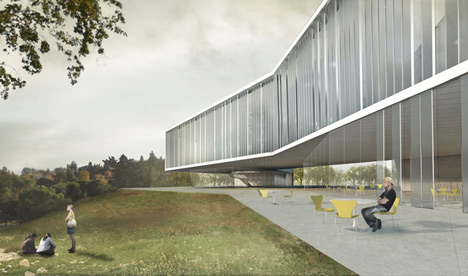
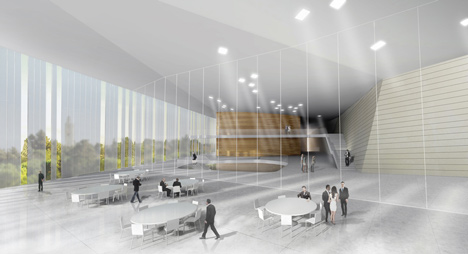

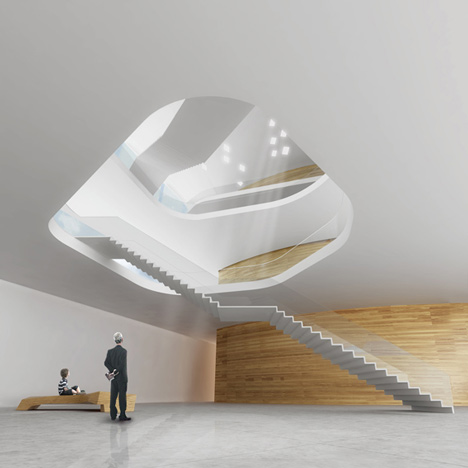
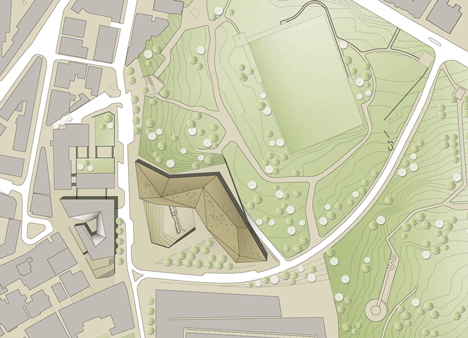
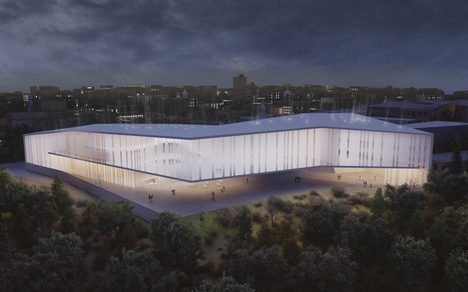

No comments:
Post a Comment